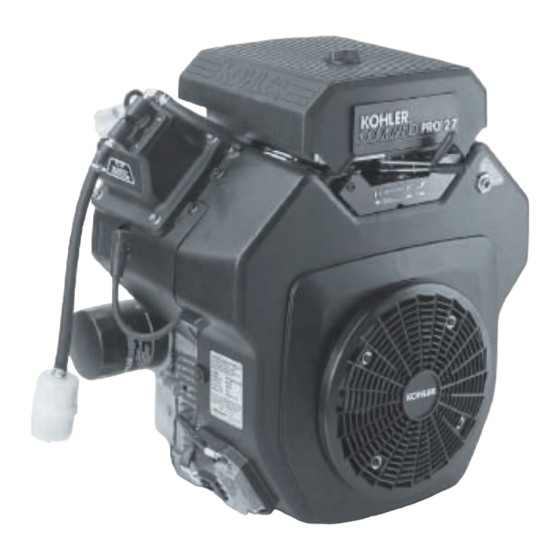Model Designation
Model CH730 for example: C designates Command
engine, H designates horizontal crankshaft , and 730
indicates the numerical model designation.
Engine Identifi cation Numbers
When ordering parts, or in any communication
involving an engine, always give the Model,
Specifi cation, and Serial Numbers of the engine.
The engine identifi cation numbers appear on a decal
affi xed to the engine shrouding. Include lett er suffi xes,
if there are any.
Emission Compliance Period
The Emission Compliance Period referred to on the
Emission Control or Air Index label indicates the
number of operating hours for which the engine has
been shown to meet CARB emission requirements.
The following table provides the Engine Compliance
Period (in hours) associated with the category
descriptor which may be found on the certifi cation
label.
Moderate
CARB
125 hours
Refer to certifi cation label for engine displacement.
Exhaust Emission Control System for gaseous fuel
models CH640, CH730, and CH740, is EM for U.S.
EPA, California, and Europe.
Operating Instructions
Also read the operating instructions of the equipment this
engine powers.
Pre-Start Checklist
• Check oil level. Add oil if low. Do not overfi ll.
• Check fuel gauge on LPG tank. Tanks should be
fi lled to a specifi c weight. To ensure safety and
proper fuel system operation, tanks must not be
overfi lled.
• Check fuel lines, regulator, and other system
components for leaks. Do not start engine until
leaks are eliminated.
• Check cooling air intake areas and external
surfaces of engine. Make sure they are clean and
unobstructed.
• Check that the air cleaner components and all
shrouds, equipment covers, and guards are in
place and securely fastened.
6
Intermediate
Extended
250 hours
500 hours
• Check that any clutches or transmissions
are disengaged or placed in neutral. This
is especially important on equipment with
hydrostatic drive. The shift lever must be exactly
in neutral to prevent resistance which could keep
the engine from starting.
WARNING: Lethal Exhaust Gases!
Engine exhaust gases contain poisonous carbon monoxide.
Carbon monoxide is odorless, colorless, and can cause death
if inhaled. Avoid inhaling exhaust fumes, and never run the
engine in a closed building or confi ned area.
Although LPG/NG burns more effi ciently and emits less
carbon monoxide than gasoline, some carbon monoxide is
produced. Avoid inhaling exhaust gases, especially over
prolonged periods of time. Do not allow engine to run
unatt ended.
Cold Weather Starting Hints
1. Be sure to use the proper oil for the temperature
expected. See Figure 2 on page 4.
2. Disengage all possible external loads.
3. Be sure the batt ery is in good condition. A warm
batt ery has much more starting capacity than a
cold batt ery.
Starting
1. Place the thrott le control in the idle position.
Place the choke control (if equipped) into the on
position. See Figure 5.
Figure 5. Optional Engine Mounted Throttle and
Choke Controls.
2. Slowly turn the fuel valve on the LPG (propane)
tank or the NG line (if equipped) to full open
position.

